#spaceworld 1997 leak
Explore tagged Tumblr posts
Text
new pokémon fanart archive!
Hey guys! The point of this blog is to reblog as many pokémon fanarts as possible (my goal is to reblog them all, we'll see if that's possible haha) so they're all properly tagged and easily searchable here.
I'm just getting started so you might find some tags are still partially or totally empty, I hope you come along to see them grow!
If you have an art blog and you draw/gif/craft pokemon, send me a DM and let me know! Or you can submit your art if you want to :)
what you can search for:
by type of art:
fanart both digital and traditional
gifs from the games/anime and animation in general
merch fanmade - plushies, enamel pins, and other objects
3d model
by character
pokemon: just go to the search bar on the top part of the blog and search for your favorite pokemon! see pikachu, for example. regional variants are tagged like "alolan raichu", not "raichu", though they should show up on the search for "raichu".
human characters: same as pokemon, search them by their english name. for example: gladion. for professors you should search for "professor (name)", like "professor oak" and not just "oak". submas have their own tag for the both of them, but also individual tags for ingo and emmet.
original characters both human and pokemon
fakemon for fan made pokemon, and from there you can branch off to variants or fusions
betamon for beta pokemon (from the leaked betas, like the 1997 spaceworld gold/silver one, or the diamond/pearl one; or from official sources, like the latias+blaziken pokemon from the ruby/sapphire showcase). beta versions of pokemon that exist have their own tags, like "beta wooper" and not "wooper"
by game
just search for the game you're interested in. spin off sagas have only one tag (like mystery dungeon) and main series games that have two versions follow the most used order for them (like black and white).
40 notes
·
View notes
Text
Update 6/16/2024
Small but detailed update.
My laptop's fan stopped working and the battery was bulging. Instead of getting a new battery and fan I decided to just get a new damn laptop.
I'm already annoyed with it. I'm thinking about returning it to get the much cheaper but identical one or to just get a new battery and fan for my old one. (Unless I can get my folders to not hang, or get my images to actually preview.)
There's also still a whole lot of personal stuff going on.
Pokemon:
+I looked through the Spaceworld 1999 sprites again to see Honoguma's rework into Teddiursa for it's color scheme (it shares one with Kotora at the time, so I didn't use it for anything) but I finally noticed this thing.

Girafarig was going to have a pre-evolution. They looked like generic ghosts in the 1997 and 1998 builds- nothing like Girafarig. So I wasn't going to use it. For some reason it didn't click to me for me that they had a third design that was much closer to Girafarig until I looked through the list of 1999 Pokemon again. So I decided to make one with this back as a reference... Using the same Girafarig sprite that is used in my game.

I replaced the front Girafarig sprites with their Diamond and Pearl ones, since I used the ones that came with Essentials to make Girig.
I'm calling it "Girig." I am almost certain that that would be what Nob would call a baby Girafarig. (He was the English translator for the games for many generations.)
There's no "female" variant or icon for Girig right now, though I probably will at least get the icons done before I upload this build.
Because I'm doing this I'm also going to be adding Farigiraf.
Girig -Happiness-> Girafarig -Level 38-> Farigiraf
I'll have Girafarig available to catch in Route 4 (the route after Fulgora) and one part in the Safari Zone. I'll also have Girig be one of the eggs you can get from the Pokemon Breeder on Nemorensis, and be one of the eggs you could get every Friday if you own a Daycare Center that Ollie works in.
Graphics:
-I finally realized that I didn't replace the sprites when you're looking at the starter Pokemon and the preview of them pops up, so I finally did that.
And in case I failed to do this before, comparisons!

The 1997 demo that was leaked was in black and white, so I didn't know what color the Pokemon would be. There has been a colored version that was available, and one blurry screenshot from it that showed Honoguma as being orange here. (And Metapod as being red for some reason.) I got the red color scheme from some fan art that somebody who got to play the original demo drew here.
I also just wanted it to look better.
Despite knowing that Chikorita has been pretty consistent throughout the stages of Gold and Silver, and that the artist made some changes to it, I'm keeping the golden eyes, the "blobby" backside and those horn things so it still have differences in comparison to canon Chikorita.
The only changes I made to Kurusu was through shading, so I'm not going to bother doing a comparison of them here.
I also recolored Honoguma's shiny since the yellow and black looked too close to the orange and black. I did that when I was high off of a birth control shot and I don't know where I saved it, if I saved it. I'll be changing that if I ever find it. (Or recolor it.)
This is assuming that I didn't dream that I recolored them.
#pokemon everlasting orchard#pokemon fan game#pokemon fan games#pokemon essentials#pokemon#pokemon eo update
0 notes
Photo

52
#leafeon comic#comics#leafeon#spaceworld 1997 gs demo leak#hoppip (demo sprite)#cleffa (demo sprite)#mime jr (demo sprite)#elekid (demo sprite)#pichu (demo sprite)#animon
6 notes
·
View notes
Photo

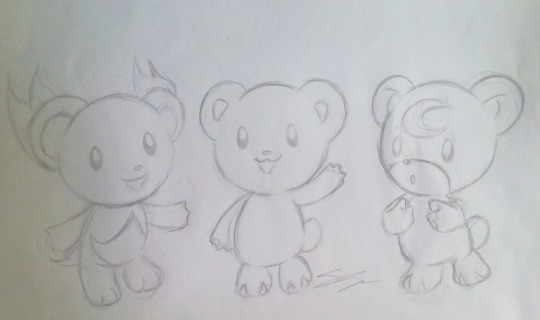
(´ノ・ω・`)ノ a couple unused, or leaked (Spaceworld 97/99) G/S Pokemon i sketched along with Celebi and Teddiursa~
Barunda, (a cute balloon Pokemon that didn’t make it into the game), and beta Celebi, and Celebi~
Honoguma (cut fire bear starter Pokemon), a newer design but yellowish, and then Teddiursa~
#pokemon 1997#beta pokemon#beta#beta gold pokemon#beta silver pokemon#unused pokemon#pocket monsters#cute#sayu#sayuriamaya#sayuri-amaya#barunda#celebi#beta celebi#spaceworld 1999 celebi#spaceworld celebi#spaceworld honoguma#honoguma#serebii#gold silver leak#spaceworld 1997 leak#pokemon gold silver leak#new pokemon leak
10 notes
·
View notes
Photo

The SpaceWorld leaks saved my life.
#pokemon#pokemon gold beta#spaceworld#spaceworld leaks#spaceworld 1997#pokemon gold demo#pokemon gold and silver#pokemon gsc#baby meowth#meowsy#lickilicky#beta lickilicky#baby tangela#beta tangrowth#tangrowth#baby paras#beta mime jr#mime jr#beta elekid#elekid#beta pichu#pichu#beta cleffa#cleffa#beta igglybuff#igglybuff#baby goldeen#beta hitmontop#hitmontop
210 notes
·
View notes
Photo







I wanted to post more I liked since I was in a rush earlier. I honestly prefer that evolutionary line for Hoppip. Cute kitty cotton puffs is just an adorable concept. Honoguma and Kurusu both have pretty good evolutionary lines too, and Kurusu's reminds me of Lapras and Dragonair. I hear that Umbreon was actually a Poison-type before it was changed to Dark, but I don't know if that's true or not. That shark may have become Sharpedo later, but I prefer the beta design. The anchor is pretty cool. I also love proto-Mantine and the angelic/devilish look going on. That deserves to be in a later game. The voodoo doll is pretty cool too. (Possibly cut to avoid the "witchcraft and devil" accusations, maybe? I know that was something that the moral guardians were on about when Pokemon was at the peak of its popularity here in the US.)
146 notes
·
View notes
Photo

After I made this I realized it was supposed to be POWDER not salt.. even though the original is salt??? Still funny though, right??? ..... RIGHT!?
#space world 97#spaceworld 1997 pokemon gold demo#leaked pokemon#datamined pokemon#pokemon#powder meme#powder that makes you say yes#drawings#art
112 notes
·
View notes
Photo

I see we were robbed of something great.
#ヒナーズ#hinaazu#doduo#pokémon#spaceworld leaks#spaceworld 1997#pokemon gsc#fan art#photoshop#tablet#sketches#limited palette#my art#also hi sorry for not uploading a lot of art; i've been looking for a summer job and like cleaning out my room for the last week or so
53 notes
·
View notes
Photo

i did a thing
from the gold/silver beta, meowth’s pre-evo
29 notes
·
View notes
Photo

I fell in love with Meowth's Baby Pokemon, hopefully we'll get it soon in the next generation. Based on the sprite of Pokémon Gold & Silver Spaceworld 1997 Demo. Follow me: Facebook: fb.me/MarioPaolilloArt Instagram: instagram.com/mpaolillo01/ Support me on Teepublic: https://www.teepublic.com/user/flamingfox
#babymeowth#meowth#pokemon#konya#meowsy#ニャース#kohnya#pokemon gold silver beta#demo#pokemon leak#proto#1997 spaceworld
6 notes
·
View notes
Note
This isn't really a spoiler, but from this point to the end of the next arc, quite a bit makes sense with the knowledge that Kusaka almost certainly got a chance to play the Spaceworld GS demo.
I was actually just wondering about this as I was queuing posts! Because there are several visual references to elements from GS in this chapter and during the Pokemon League chapters, and they're just too spot on to be an educated guess.
But the Space World GS demo makes perfect sense. I can't find information on when these chapters were published serially, but volume 3 wasn't published until mid-1998, after the 1997 Space World GS demo. At the very least, Kusaka must've been given some concept art/early designs to work with.
For those who don't know about the Spaceworld GS demo, you can:
Read about it on Bulbapedia
Look at various documentation and graphics on The Cutting Room Floor
Enjoy this video that summarizes the saga behind the demo's leak and looks at some of the beta Pokemon designs.
5 notes
·
View notes
Photo
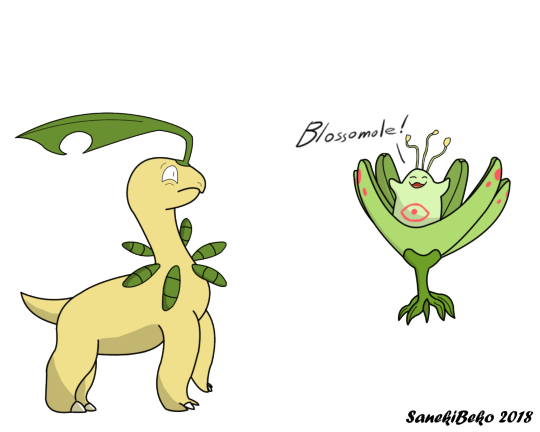
Title: Before Bayleef
Year: 2018
I made this when the Spaceworld 1997 roms of Gold and Silver leaked out. Yeah I have no idea how a Chikorita would form into this thing.
#bayleef#Blossomole#pokemon leak#pokemon#pokemon spaceworld#goldandsilver#gold and silver#pokemongen2
4 notes
·
View notes
Note
Well, now I'm curious. Why does the move curse involve your pokemon stabbing itself with a nail?
OKAY, so
For those who don’t know anything about Pokemon: the move Curse (started as a ???-type movie, later because Ghost type) halves your Poke’s HP while removing 1/4 of an opponent’s HP per round if they’re a ghost type (it works differently for other types but we don’t care about that). That wouldn’t be weird except the animation involves your Poke just like, stabbing itself repeatedly with a fucking nail, which has nothing to do with curses??

bro?? you good???
Anyway, in order to answer this we need to look at the Spaceworld beta. Spaceworld was a gaming convention in 1997 that had a preview beta version of Gold/Silver, and those files leaked online. The beta includes data for all that Gen’s Pokes at the time, including ones that didn’t make the final cut. There’s a lot going on there, but we need to focus on this evolutionary line:

Their Japanese names are Norowara and Kyonpan. I’m using the fan-translated names of Kurstraw and Pangshi because I don’t speak Japanese. anyway
now, if we pop open the movesets for Kurstraw there:

See that move at the bottom there, “Nail”? (Also have heard that translated as Nail Down, not sure which is more accurate.) Opening up our 17th document of the evening to grab the move descriptions, we find this:

That’s right--”nail” is a beta Curse.
And Kurstraw not only didn’t learn this move until lv. 100, but it was also its signature movie (as in, no other Pokemon at the time had that move). As a reminder, signature moves usually have animations unique to the Pokemon using them.
Also, Banette is the closest thing we have in canon to Kurstraw, and check out its dex description:

Replace “pins” with “nails” and you get the idea.
SO BASICALLY, Curse invovles your Pokemon stabbing itself with a nail because it was originally the signiture move of a scrapped voodoo-doll Pokemon that’s already impaled on a giant nail anyway, with the idea being that it would stab itself to hurt the opponent (because that’s like, how voodoo dolls work). But then that Pokemon got scrapped, the move got renammed, and someone was like “should we reanimate this so that non-doll Pokemon aren’t shoving nails into their bodies” and someone else was like “nah”.

thank you for coming to my TED talk
#anyway how much do you think I have to bribe gamefreak to get these two released because I Need them#using curse is up there with summoning missingno when it comes to utilizing the damned souls of scrapped pokemon for fun and profit#pokemon#beta pokemon#Anonymous
257 notes
·
View notes
Text

Hi! My name is Bel, and this is my Pokemon blog. I've loved Pokemon as long as I can remember. My URL is an old reference to Honoguma the fire type beta Starter in the Pokémon Gold and Silver Spaceworld 1997 demo, before the demo itself was leaked. My favorite Pokemon are Quilava, Zorua, and Mew. My main is @rinkaenbyou, thanks for visiting!
39 notes
·
View notes
Text
Gigaleak, preservation, emulation and content dissemination
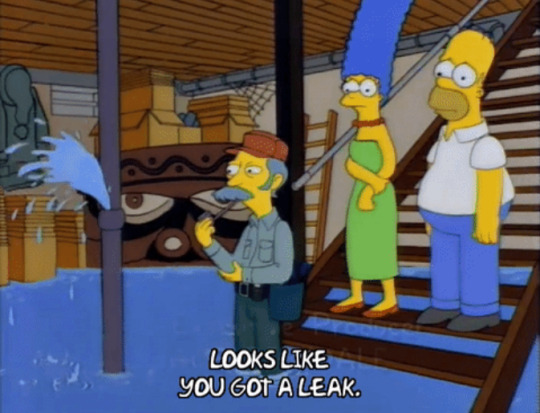
(la version française de cet article est disponible ici)
On November 21, 1992, the sequel to the most widespread Mega Drive title was released in both Japan and South Korea, then in the rest of the world. In spite of itself, this game made many people want to find out what had happened to all those elements that had been cut during development. A few months earlier, when Sega started to show its future hit to the press, the public got a glimpse of levels such as Hidden Palace, an area absent from the final version. This wasn't the first time such an event had occurred; other sometimes equally popular titles such as Super Mario Bros. 3 have encountered the same fate, either through press coverage or via screenshots featured on the game's box. But Sonic 2 has one point that sets it apart from most other titles, in addition to its popularity: a development version was stolen a few months before the game hit the shelves. According to Yuji Naka, programmer and figurehead of the license at the time, a cartridge was stolen at a trade show in New York. His former colleague Akinori Nishiyama, meanwhile, says Sega had been hacked. In any case, this version was marketed in markets where cartridges produced without an official license were common, before being found in 1999 on a Chinese website as a ROM. Named after the person who found the ROM, the Simon Wai prototype features an unfinished version of a level that was thought to be never playable: Hidden Palace. The popularity of the license helping, amateurs started to collect documents of all types in order to identify all the differences between the versions marketed by Sega and the numerous screenshots and other development versions found over the years.
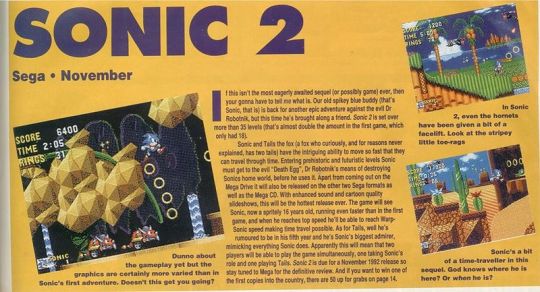
A preview published in the October 1992 issue of the British magazine Mega. 2 of the 3 levels shown here do not appear in the final version of the game.
Since Sonic 2, a lot of development versions and design documents have found their way on the net with more or less echo and communities of amateur researchers have gathered around sites such as The Cutting Room Floor, Unseen64 or Hidden Palace. On February 23, 2008, the latter put online a thousand development versions of games produced by Sega or released on Sega consoles after buying archives disks containing the games in question, sometimes with several dozen versions per title. However, the data leakage that Nintendo is experiencing in recent months seems unparalleled in terms of volume and variety of content.
In April 2020, development versions of various episodes of Pokémon, as well as source code, development tools and graphics from intermediate versions were released. Before that, in 2018 and 2019, a development version of Pokémon Gold and Silver (the "Spaceworld 1997 demo", named after the show where it was presented), assets of Pokémon Red and Green then Pokémon Diamond and Pearl had leaked on the net. In the days that followed, other types of content appeared on 4chan: official documentation relating to a number of Nintendo consoles including the Wii, the Nintendo 64, the 64DD, the iQue Player, a technical demo produced for the Nintendo 64, source code written for Super Mario 64, Powerpoints and internal correspondence from several companies for a total of about 29,000 documents. A second batch of data began to appear on July 24th and found an echo that goes far beyond technical enthusiasts and console clone producers. A large amount of content relating to some of the most popular titles and licenses in the history of video games (Mario, Zelda, Animal Crossing, StarFox) has been put online, linked on 4chan then distributed on the rest of the Internet. Development versions of Super NES, Nintendo 64, Game Boy, Game Boy Color, Game Boy Advance games, as well as source codes, graphic assets, 3D animation tests, sound effects and uncompressed music, 2D and 3D illustrations, logos, level editors, conversations between developers, visuals for a website, documents relating to the Wii, etc.
The origins of the leak Nintendo has been the subject of several attacks in recent years. Of those that have come to light, one resulted in the leakage of information about the Switch prior to its release, another involved source codes obtained from dozens of companies, but the one that most closely corresponds to the present case - generally called the Gigaleak - was carried out in 2018 by a man named Zammis Clark, a British security researcher and former Malwarebytes employee, a company specialised in detecting and removing malicious software. In 2015, he hacked VTech's servers, revealing that the company had illegally collected the data of nearly 200,000 children. He also revealed vulnerabilities in apps from manufacturers such as Dell, Lenovo and Toshiba as well as in a tool used in UK schools and developed by Impero. In 2017, he hacked some of the Microsoft servers and stole tens of thousands of files before sharing access to these servers with others. After being arrested and released on bail, he hacked Nintendo's internal network in March 2018. In its official communication, the Japanese company only mentioned the theft of a few thousand IDs and passwords as well as access to data relating to games in development at the time. However, Ganix, the man who released the Pokémon Diamond and Pearl sprites in December 2019, explained in an interview he gave to LavaCutContent a few days later that the various leaked content relating to Pokémon (including the Spaceworld 1997 demo released in May 2018, the month Nintendo realised it had been hacked by Clark) all came from a hack done in March 2018 by a man who goes by the pseudonym "Wack0". We know since the Impero affair that Wack0 is none other than Clark's pseudonym - a letter written by Impero and addressed to Clark in 2015 links the two names. Clark had shared these files with Ganix, who decided on his own initiative to leak them in December 2019, thus betraying Clark's confidence in him. The 4chan thread with which the Gigaleak started in July 2020 seems to refer to this event by its title: "ppg leak time: fuck ganix".
Because of his profile - Clark has a form of autism and suffers from prosopagnosia, the inability to recognize and identify faces - the judge felt that he would be at too great a risk if sent to prison. He was sentenced in 2019 to a 15-month suspended prison sentence and subject to a 5-year judicial review.
The presence of files relating to the iQue Player and the BroadOn company among the leaked documents suggests that the hacker accessed BroadOn’s servers, a company founded by Wei Yen who also co-founded iQue with Nintendo. Due to the legal restrictions in effect in China from 2000 to 2015, Nintendo had to make a joint venture to enter this market and develop a variant of the Nintendo 64 - the iQue Player. BroadOn is one of Nintendo's collaborators and has developed software for the Wii as well as for the iQue Brand (which includes game consoles such as the Game Boy Advance, the DS and the 3DS).

The iQue Player (picture by Evan Amos)
While Nintendo is the main target of this leak, other companies have also been affected by the ripple effect. Among them are Capcom, Konami and M2 (which is the current holder of the rights to the Aleste series). Assets and development versions of some of their games released on Super Famicom are now in the wild. Among them are Megaman X, Super Ghouls'n Ghosts, Super Castlevania IV, Axelay, Parodius Da!, Ganbare Goemon and Super Aleste. Since the release of Collection of Mana, it is public knowledge that Nintendo keep content produced by other companies in its archives. Masaru Oyamada, producer of the Mana series, said that this compilation was made possible by Nintendo, which allowed Square-Enix to recover the various source codes of these games.
In the wake of the Gigaleak, the source code for the Xbox Unreal Championship 2 game has been put online, along with numerous design documents. Epic Games' servers had been hacked in 2011 without the identity of the visitor being revealed; it cannot be excluded that the files in question originated from this attack and that the author of the hack kept them until that day on July 30, 2020. The link between this leak and the Gigaleak is not yet certain. In such a case, it is unlikely that anyone would publicly claim responsibility for the leak.
On the authenticity of the leaked content When a console prototype, a development version of a popular game or from a major license surfaces, it is customary to take it with a pinch of salt, in case someone came up with the idea of pulling a hoax or to replenish his bank account by trying to sell a fake. In the case of the contents leaked in 2020, since Nintendo hasn't officially commented on the case despite the requests made by Vice.com and LeMonde.fr, the doubt persists and the volume of data is such that it will be difficult to authenticate everything file by file. Nevertheless, Dylan Cuthbert, former developer of Argonaut who later joined Nintendo, recognised one of the tools developed for Starfox 2. In addition, in a number of cases, developers at the company have in the past provided clues suggesting that at least some of the content is authentic. This includes some rejected designs for Yoshi from Super Mario World, already unveiled in 2017.
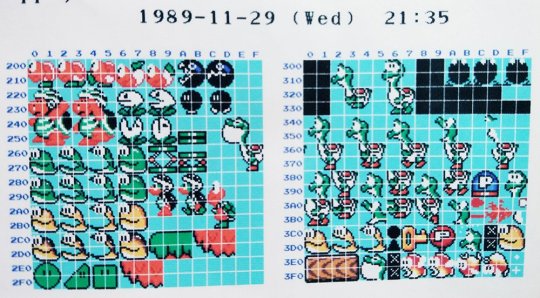
A sprite sheet created by Shigefumi Hino during the development of Super Mario World, one year before the game’s release.
There are also quotes from developers about the presence of Luigi in Super Mario 64 and adult Mario in Yoshi's Island (both of which were set aside during development), characters in overalls in Super Mario Kart before it was decided to set the game in the Mario universe and a circuit from Mario Kart 64 located in a city but deemed too big. The same goes for the Zelda license: Yoshiaki Koizumi said he made a polygonal version of Link as part of a prototype adaptation of Zelda II for the Super Famicom, Eiji Aonuma explained that the cycle of Majora's Mask originally lasted not three days but a week and Link's Awakening was originally thought to be an adaptation of A Link to the Past - the world map of the latter made with the engine of the former has been found. Regarding Dragonfly, one of the very first Super Famicom titles shown to the public in 1988 before being renamed Pilotwings, the different screenshots published in magazines correspond to the version that leaked. While this is not an absolute proof of its authenticity - in 2012, a fan recreated an early version of Sonic 1 using screenshots as references -, the sum of clues previously cited and the large amount of documents posted online make the hoax thesis unlikely.
This leak also contains a lot of files that are difficult to identify, mainly because the names used for the files and directories are not always very explicit and some titles had never been publicly shown before or in another form. Examples include Sleep, an unfinished mouse-playable Super Famicom game (which may have been announced under the title "Black Out" in 1992), Super Donkey, another unfinished title with a number of visual similarities to Yoshi's Island, or Link's profile sprites for which we can only make guesses. Plunging into this maze of repertories requires patience as well as certain skills. Let's take the case of a game: each game has its own CVS file (named after the software used by Nintendo). A CVS file may contain several versions of a game, like a log of its evolution: an early version, a more advanced version with some elements that differ from the final version, the final version, etc. These files are not ROMs that could be launched in an emulator in 3 clicks. You have to compile the source code of the game you want to launch first, if there is source code.
Private conversations There is one point on which the leak doesn't seem to have been publicly praised: the posting of private conversations. Since April 2020, conversations between employees from various companies (Nintendo, BroadOn, then Argonaut in July) have been circulating on the net, in particular exchanges between Argonaut employees that took place in the early 90s, when some of them came to work at Nintendo in Japan. In addition to the fact that these are private correspondence - which already poses legal and moral issues - some of the excerpts shared online highlight issues that echo recent cases involving other companies, particularly on the subject of sexism and sexual harassment. In this case, the problem is twofold: there is, of course, the harassment itself (unsolicited pornographic images), but also the fact that the subject has come up without the victims having chosen to deal with it themselves.
This case illustrates the fact that video game preservation requires a minimum of methodology and should not necessarily result in the unregulated dissemination of any content relating to the development of a game or the history of a society. On the rest of the leak, opinions are very divided. Some people welcome it unreservedly; others have a mixed or even negative opinion, with the question of preservation and its modalities itself being debated.
Preservation Video game preservation is a race against time that began years ago, but the rules to be applied are still being discussed. A part of the public considers that everything that is not yet available as a ROM or ISO on the net should be dumped and shared. In 2019, a notorious collector, owner of one of the 3 knonw copies of the arcade game Akka Arrh, claimed that someone came to his home to unknowingly dump the ROM of the game in question and put it online. This is one of the most extreme cases known (if true), but it raises another issue: does preservation necessarily have to be illegal? The ROMs of commercial games you can find on the net (excluding the official websites such as the Nintendo eShop) are copies that contravene intellectual property law, whether they are final or intermediate versions, marketed or not. As early as 1993-94, consoles such as the NES, Super NES and Mega Drive had their dedicated emulator and with them ROMs that could be found via BBS. Already at that time, there were ROMs of development versions, some of which seem to have disappeared from the net because of their low distribution. These generally come either from developers who kept cartridges, CDs or files on hard disk, or from journalists who did the same with preview versions. In both cases, it is likely that they were not supposed to keep possession of them, let alone resell them years later to individuals. The amount of money exchanged for these copies has skyrocketed over the last 20 years. What might have been worth a hundred dollars in the early 2000s is now steadily rising to over a thousand. The illegal nature of the Gigaleak is nothing new in this field, but it may have been shocking in terms of its scale and the fact that the content was not obtained through a transaction (even if what made it possible is of questionable legality).
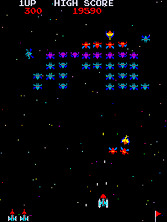
In 1979, while Namco was conducting a location test of Galaxian in a coffee shop, the game's PCB was swapped and duplicated, making it one of the first commercial titles with a beta version that ended up in the wild even before the final (and official) version was released.
Legislation in countries such as Japan, France or the United States is not so much a hindrance to the preservation as it is to the dissemination of ROMs and ISOs. We can certainly deplore the inadequacy of state initiatives as well as the meagre budgets allocated to the preservation of video games - in 2017, during a symposium on the preservation of video game preservation held at the BNF (National Library of France), its audiovisual department confessed that the budget allocated for video games was much lower than that obtained by the film sector with an average of 5,000 to 6,000 euros per year, going up to 8,000 euros in good years. It covers the acquisition of missing games (those who fell through the cracks of legal deposit), storage costs (the room where the games and machines are kept must remain at a constant temperature), etc. But the current legislation is an obstacle to preservation mainly in special cases such as video games with child pornographic content, games that companies such as Enix sometimes published in the early 1980s in Japan.
The Game Preservation Society, an entity based in Japan, does not have the task of putting online copies of the (sometimes very rare) games that it keeps in its archives, but of preserving them. Private individuals can also call on it to make backups of titles from their collection, the purpose of a private backup being to prevent damage to the programme's storage medium (cassettes, floppy disks, CDs, etc.). This policy is sometimes met with incomprehension or even disapproval from a certain fringe of the public who tirelessly demand the games' ROMs. OK, but which games? Websites that share ROMs without the agreement of their rights holders have a definite advantage over game publishers: almost all the games released on some of the most popular consoles can be found on the net. Few publishers are able to exploit their entire catalogue on a continuous basis for reasons as diverse as lack of resources, rights problems in the event of third-party licenses, or lack of commercial interest. If you want to try out the entire Mega Drive library, either you buy the 900 or so cartridges published in the past, or you download an emulator and the corresponding ROMset, thus breaking the law. It gets even more complicated with games that were playable online or available for sale in digital form only if the relevant service has closed. Abandonware-France, a website created in 2000 where you can find thousands of PC games and video game-related magazines, has adopted a clear line excluding games that are still commercially exploited as well as those released after 2000. It's less an ideal solution than a default solution - it doesn't solve the legality issue, since the games haven't yet fallen into the public domain - but it has no impact on publishers' sales, which is still one of the surest ways to get through the bullets. Other websites have been less cautious on this point by making available content that is still commercially exploited. Due to its special status, Internet Archives makes it possible to play (but not download) thousands of old games online, including titles that are still commercially exploited (Sonic 1 for example) but with the notable exception of Nintendo games or games released on Nintendo systems. In 2016, the Japanese company took down the Nintendo Power issues that were available for download at the digital library, stating that "The unapproved use of Nintendo's intellectual property can weaken our ability to protect and preserve it, or to possibly use it for new projects”. On June 1, 2020, four book publishers sued the Internet Archive after its National Emergency Library project went online, a project with which the library lent out digitized versions of books that are still commercially available. The outcome of this lawsuit could have an impact on the fate of the site and the different types of content that can be found there.
If you're interested in development versions, having a well-stocked wallet won't be of much help as legally accessible versions are rare. Sega provided us with a few exceptions by including both the final and an intermediate version of Gunstar Heroes in "Sega Ages 2500 Series Vol. 25: Gunstar Heroes Treasure Box". Probably unintentionally, the version of Revenge of Shinobi featured in "Sega Smash Pack Volume 1" on PC is a development version. As for “Silent Hill HD Collection”, the choice to base these adaptations of Silent Hill 2 and 3 on intermediate versions (retouched for the occasion) was made by default.
Finally, there is the question of making the design documents available, which again relies largely on the good will of the publishers. In addition to the interviews and documents published on specialized sites and magazines, many artbooks including illustrations, concept art and/or excerpts from design documents have been released in Japan since the end of the 1980s, followed by the US market in the early 2000s and more recently by France. Although it is not the first representative of its category, Sonic Jam has long been a reference in terms of compilation by offering galleries of documents, information and sometimes previously unseen videos in addition to the first Mega Drive episodes. In 2002, Final Fantasy X came bundled with a making of, following in the footsteps of the movie industry Square was looking towards at the time. For the past few years, some of the games produced by Sony have been the subject of making of accompanying their release and many independent developers regularly communicate on the progress of their games, both on social networks and through their blogs. However, not all games have their own journal or post-mortem. This is where initiatives such as the one launched by the Conservatoire National du Jeu Vidéo in France take over. The latter meets with developers and development companies and requests that part of their archives be made available to the public, with varying degrees of success. Other organizations such as the Musée Bolo in Switzerland (which was given archives by former Infogrames CEO Bruno Bonnell) and Internet Archive have hosted documents of this type.
The issue of preservation is not only a public issue, as companies are (or should be) concerned as well. Apart from exceptional cases such as the Great Hanshin earthquake that destroyed part of the Konami Archives in 1995, development companies rarely communicate about the loss of documents. One of the reasons for this is that in many cases they have disposed of all or part of their archives themselves. In 2016, 2 Namco employees started the Archive Project to save 350 boxes of documents from the dumpster. The two men had to convince their company to release a budget for this project even though the latter was planning to dispose of the boxes to avoid incurring new storage costs. At Square Enix, on the other hand, some files could not be saved in time and some games' source codes were lost. In addition to the Mana series previously mentioned, we know that the source code of the PlayStation version of Final Fantasy VIII has disappeared, forcing the developers of the HD version to fall back on the code of the PC version whose music is slightly different. Same with the first episode of Kingdom Hearts; the developers of the 1.5 HD Remix version had to analyze in depth a commercial copy and recreate many assets. An example that echoes the story a developer posted in 2010 in which he explained that, as part of a port of various Midway arcade games, the editor in charge of the project was unable to get his hands on the source code of Spy Hunter, so he had to download the game's ROM in order to extract the graphics via MAME and retrieve the sound files from a fan site, among other things.
---- Interlude: source code----- Having the ROM of a game does not mean you have the source code of that game. While there are thousands of ROMs of commercial games on the net, source codes are much rarer. In 2012, Jordan Mechner released the source code for the Apple II version of Prince of Persia, which he wrote alone and for which he is the owner, even though the licensing rights now belong to Ubisoft. More unexpectedly, it was discovered in 2014 that a large part of the source code for the NeoGeo version of Art of Fighting was in a file from its adaptation on PC Engine CD. In all likelihood, the developers of this version had access to the source code of the original version, which was mistakenly included in all copies of the game. In theory, having the source code of a game facilitates its adaptation on another support since, from one version to another, one can reuse a more or less important part of it, thus reducing the workload and the development costs. The loss of a game's source code therefore greatly reduces the chances of seeing a remastered version of the game. The fallback solution when it is an old game originally released on console or arcade is to use a ROM and an emulator, as it has been done on many compilations or re-releases of arcade games since the early 2000s.
The Nintendo case The source code for several Nintendo games and systems is now available on the net. Some might see this as a public backup, but the various leaks that happened since 2018 tend to prove that Nintendo knows how to preserve its data (at least for some time) and doesn't necessarily need outside help. There are several rumours about Nintendo that have not yet been confirmed. One of them is that the source code for The Legend of Zelda: Link's Awakening has been lost, a hypothesis that arose after studying the source code for the DX version of the game, released five years later for Game Boy Color. Another rumour claims that Nintendo is downloading the ROMs for its own NES games, a rumour that found an echo in 2016 after a lecture on emulation was given at the Game Developer Conference. However, if the NES game ROMs used by Nintendo for its Virtual Console look like the ones circulating on the rest of the net, maybe it's because at least one of the persons hired by the Japanese manufacturer to dump the ROMs of its games - Tomohiro Kawase - contributed to the group (iNES) that was dumping ROMs of those same games before joining the company.
The argument that Nintendo is a temple from which nothing comes out seems somewhat exaggerated. The company's games may not have been the subject of as many artbooks as Square Enix's, which, when it doesn't lose its source codes, knows how to showcase its heritage, but it has published many documents in the past relating to series such as Mario and Zelda (which was recently the subject of a series of artbooks), has released new games or versions of new games (Starfox 2 on the Super NES Mini, the European version of Drill Dozer on the Wii U Virtual Console), not to mention the "Iwata Asks" series, which we'd like to see an equivalent in all other development companies. The sense of secrecy that some people might see in Nintendo is probably due in part to the fact that the public is more interested in it than in most of its competitors. The popularity of some of its licenses has few equivalents in the world of video games and pop culture in general. The fact that we still discover old, unreleased Nintendo games nowadays is nothing unusual; tons of games are cancelled without having had a chance to be officially announced.
On the age of the content put online Two arguments are regularly put forward to minimize the significance of the Gigaleak. According to the first one, the content in question is old and therefore less sensitive or of lesser value than if it were recent documents. This is forgetting that Nintendo has more than once taken ideas or concepts that are sometimes decades old out of its boxes. During the 2007 Game Developers Conference, Shigeru Miyamoto went back over the concept of Miis and explained that it had undergone several changes over the years, starting as a demo on the Famicom Disk System, then reappearing on Super Famicom and 64DD before finally finding its way to the Wii in 2006. The Mario series has also had its share of ideas that have been put aside then used in later episodes. The idea of straddling a mount, for example, was first suggested during the development of Super Mario Bros. 3 (1988) before being adopted in Super Mario World (1990) with Yoshi. Miyamoto had originally envisioned a horse, but he kept the idea for The Legend of Zelda: Ocarina of Time (1998). A simultaneous multiplayer mode was experimented with at the time of Super Mario Bros. 3 (1988) and will only be included in the series starting with New Super Mario Bros. Wii (2009). Finally, one of the sprites from Super Donkey bears some resemblance with one of those appearing in Super Mario Maker, by its concept.
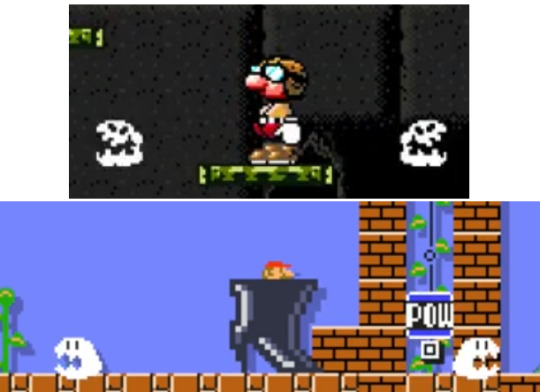
Top: Super Donkey. Bottom: Super Mario Maker.
The second argument concerns the damage suffered by Nintendo and reveals a difference in treatment with what happened in April 2020 when a development version of The Last of Us 2 leaked a few weeks before the game's release. Messages of disapproval and support for the developers seem to have been more popular than those welcoming the leak. In the case of the Gigaleak, Nintendo has often been perceived as a big company, an abstract entity, thus obscuring the fact that its games are also the sum of the work of a group of individuals. In legal terms, unless otherwise stated, the fruit of the work produced within a company is the property of the company. On a personal level, it often happens that a developer has a particular attachment to what he produces.
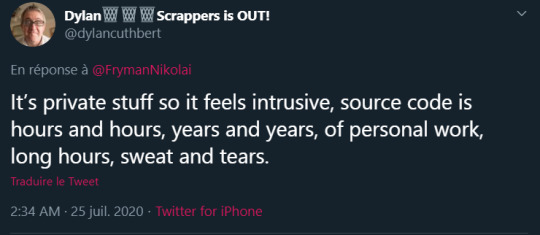
Dylan Cuthbert, in response to a person asking him how he felt, a few hours after the July 24th leak.
While some developers may have been in favour of releasing development versions - Yuji Naka tried to find the prototype of the first Sonic publicly shown in June 1990 to include it in Sonic Mega Collection - or even production documents - Jordan Mechner published the journals he kept during the development of Karateka and Prince of Persia - others are less enthusiastic about making such files available. By definition, a development version is not a finished product, and while it is natural for a finished product to be made public, this is not necessarily the case with everything relating to the development process. This is not exclusive to video games: many illustrators are reluctant to show their sketches, works in progress or unfinished drawings, no matter how old theirs works are, and the same is true of writers and musicians. As with private conversations, there is the question of respect for developers and their consent. This is obviously not a small obstacle for anyone who wants to preserve and share all the documents relating to the history of video games, but it seems difficult to me to do the work of an archivist or historian (who relies on the work of developers) if it means harming some of these developers even slightly. Of course, you have to hope that as much information as possible will come out and you can work on it in different ways, but you also have to set limits on the methods you can use and not just reason in legal and/or material terms.
Consequences It is difficult to measure how much will come out of this case, as other elements may be added in the coming days or weeks. Now that the leaked content is circulating, Nintendo will have a hard time getting it off the net and can expect clones of consoles using its own source codes to be produced and marketed in certain countries.
Regarding the emulation scene, it's a bit more complicated. In 1999, source code and documents relating to the Nintendo 64 leaked from Silicon Graphic Inc, a company that produced processors for the Nintendo 64. Known as the Oman Archive, this content was used in the early days of Nintendo's system emulation, which led to quick results. But this use of an illegally obtained code subject to intellectual property law was also a liability for the emulation scene of this machine, which took years to get rid of. Most of the other emulators available online are legal since they were developed with their own code. It's to avoid breaking the law that console BIOSes often have to be downloaded separately (like the source code, BIOS are copyrighted). The appearance of the Wii source code is therefore a poisoned gift for developers of amateur emulators. It may allow them to understand how Nintendo has done this or that, but they can't reuse it even partially without breaking the law.
Nintendo has probably already apologised to Capcom, Konami and M2 whose files have also ended up on the web. As for the rest, we can only speculate. Will publishers become aware of the interest of a part of their audience in the making of their games and offer more content to satisfy this curiosity (videos from their archives, books, making of, etc.) or, on the contrary, will they lock the doors of their archives by throwing the key into a well? Will security and control on the net increase, further restricting the distribution of certain types of content, be it fan games, ROMs - two categories that Nintendo has been fighting hard against in recent years - or Youtube videos showing things that publishers would prefer not to see on the net (like, say, glitches from Animal Crossing: New Horizons)? Or maybe nothing will change.
Sources : Sonic 2 https://web.archive.org/web/20051104100754/http://xbox.gamespy.com/articles/654/654750p4.html https://info.sonicretro.org/Sonic_Team_interview_by_Kikizo_(November_30,_2005) Hidden Palace http://info.sonicretro.org/February_23,_2008_Proto_Release Pokémon Gold 1997 prototype (2018) https://twitter.com/sanquii/status/1002107775651057664 Pokémon 2019 leak https://lavacutcontent.com/pokemon-beta-leaker-statement/ https://helixchamber.com/2019/02/16/what-dreams-may-come/ April-May 2020 leak https://resetera.com/threads/the-nintendo-leak-saga-continues-biggest-nintendo-leak-in-history-full-source-code-design-files-for-wii-released-online.196683/ https://www.resetera.com/threads/the-nintendo-leak-saga-continues-biggest-nintendo-leak-in-history-full-source-code-design-files-for-wii-released-online.196683/post-32917584 https://nintendoeverything.com/nintendo-suffers-huge-leak-source-code-and-design-files-for-wii-appearing-online/ https://twitter.com/Zetsuboushitta/status/1256320740527239168 https://twitter.com/LuigiBlood/status/1256543745794879488 recent leaks: 1 Ryan Hernandez https://www.thegamer.com/man-leaked-nintendo-switch-prison-charges/ https://www.justice.gov/usao-wdwa/pr/california-man-who-hacked-nintendo-servers-steal-video-games-and-other-proprietary 2 Tillie Kottmann https://www.bleepingcomputer.com/news/security/source-code-from-dozens-of-companies-leaked-online/ 3 Zammis Clark https://www.theverge.com/2019/3/28/18286027/microsoft-nintendo-vtech-security-hack-breach-researcher-guilty https://lavacutcontent.com/pokemon-beta-leaker-statement/ Mail sent by Impero to Zammis Clark - Wack0 https://archive.org/stream/pdfy-fRcZ1TWHaDkwz-Ea/Letter%20to%20Mr%20Zammis%20A%20Clark%20dated%2013%20July%202015_djvu.txt BroadOn + iQue https://wiki.mariocube.com/index.php/IQue#BroadOn July 2020 leak https://boards.4channel.org/vp/thread/44305551/ppg-leak-time-fuck-ganix https://www.resetera.com/threads/update-super-mario-64-and-oot-source-leaked-massive-nintendo-data-leak-source-code-to-yoshis-island-a-link-to-the-past-f-zero-and-more.254724/page-62 Aleste and M2 https://twitter.com/M2_STG/status/1014031712672571393 Collection of Mana https://gameinformer.com/preview/2019/06/11/decades-in-the-making Vice, Lemonde.fr and Nintendo https://www.vice.com/en_us/article/7kp7bx/a-massive-leak-of-nintendo-source-code-is-causing-chaos-in-video-games https://www.lemonde.fr/pixels/article/2020/07/31/nintendo-ce-que-l-on-sait-de-la-fuite-supposee-de-documents-lies-aux-jeux-video_6047809_4408996.html Cuthbert and Starfox 2 https://twitter.com/dylancuthbert/status/1286789583061934080 Mario World sprite sheet https://topics.nintendo.co.jp/article/cb34ab17-9135-11e7-8cda-063b7ac45a6d Luigi in Super Mario 64 https://shmuplations.com/mario64/ Adult Mario in Yoshi's island http://shmuplations.com/yoshi/ Super Mario Kart before Mario https://twitter.com/toruzz/status/1287400639165861888 http://iwataasks.nintendo.com/interviews/#/wii/mariokart/0/0 Mario Kart 64 circuit http://shmuplations.com/mariokart64/ https://twitter.com/AeroArtwork/status/1288299965954088966?s=19 Zelda II SFC in 3D http://iwataasks.nintendo.com/interviews/#/3ds/zelda-ocarina-of-time/1/1 Zelda OOT in Ganondorf's Castle https://twitter.com/AeroArtwork/status/1287524648222105607 7 day cycle in Zelda: Majora's Mask https://twitter.com/Zen64_/status/1287582698085777408 http://iwataasks.nintendo.com/interviews/#/3ds/majoras-mask-3d/0/0 https://www.polygon.com/2015/2/18/8064257/majoras-mask-three-day-timer-week DragonFly https://www.unseen64.net/2008/04/14/pilotwings-snes-proto/ Sonic 1 fan recreation https://www.youtube.com/watch?v=oHtzXzu2BDA Argonaut https://twitter.com/corentin_lamy/status/1286932458173276161 https://www.resetera.com/threads/update-super-mario-64-and-oot-source-leaked-massive-nintendo-data-leak-source-code-to-yoshis-island-a-link-to-the-past-f-zero-and-more.254724/post-40826655 Unreal Championship 2 https://twitter.com/Sinoc229/status/1288680503801860096 https://www.ign.com/articles/2011/06/11/epic-games-website-forums-hacked Akka Arrh https://arstechnica.com/gaming/2019/04/after-a-lost-atari-rom-leaks-retro-fans-ask-was-it-stolen/ Galaxian https://www.4gamer.net/games/999/G999905/20180313040/ Firsts emulators https://emulation.miraheze.org/wiki/History_of_emulation Namco's Archive Project https://game.watch.impress.co.jp/docs/news/1205387.html Spy Hunter http://web.archive.org/web/20110925185703/http://www.ppl-pilot.com.nyud.net/mame.aspx Prince of Persia https://github.com/jmechner/Prince-of-Persia-Apple-II On the CNJV, Musée Bolo and BNF : "colloque: la conservation du patrimoine vidéoludique" (2017). Nintendo Power, Internet Archive https://www.polygon.com/2016/8/8/12405278/nintendo-power-issues-disappear-from-free-online-archive http://blog.archive.org/2020/06/01/four-commercial-publishers-filed-a-complaint-about-the-internet-archives-lending-of-digitized-books/ Nintendo ROMs https://www.resetera.com/threads/tomohiro-kawase-mightve-been-hired-by-nintendo-to-put-rom-headers-into-vc-updated-dec-1-2018.64755/ https://twitter.com/LuigiBlood/status/1045348387174977536?s=19 https://www.reddit.com/r/emulation/comments/9msl9j/update_did_nintendo_actually_download_roms_for/e7iemhb/ GDC 2016 https://www.gdcvault.com/play/1023470/-It-s-Just-Emulation The Legend of Zelda: Link's Awakening source code https://www.neogaf.com/threads/it-bothers-me-that-nintendo-keeps-ignoring-links-awakening.931702/page-2 Mii https://unseen64.net/2008/04/14/mii-nes-prototype/ https://www.nintendo.fr/Iwata-demande/Iwata-Demande-Nintendo-3DS/Vol-5-Interview-de-Miyamoto-san-a-la-veille-de-la-sortie-de-la-console/2-Faire-des-personnages-Mii-un-standard-international/2-Faire-des-personnages-Mii-un-standard-international-210297.html Yoshi and a horse https://www.nintendo.co.uk/News/2017/October/Nintendo-Classic-Mini-SNES-developer-interview-Volume-5-Super-Mario-World-and-Super-Mario-World-2-Yoshi-s-Island-1290850.html Multiplayer mode in SMB3 http://iwataasks.nintendo.com/interviews/#/wii/mario25th/2/3 Super Donkey - Mario Maker https://twitter.com/dbMisadventure/status/1286751468293414912 Dylan Cuthbert https://twitter.com/dylancuthbert/status/1286822093703622656 Sonic 1 prototype https://www.gamesradar.com/super-rare-1990-sonic-the-hedgehog-prototype-is-missing/ Oman Archive https://sm64-conspiracies.fandom.com/wiki/Oman_Archive Animal Crossing: New Horizons vidéo https://www.vice.com/en_us/article/m7j7yb/nintendo-takes-down-youtube-video-of-fan-showing-animal-crossing-glitches
89 notes
·
View notes
Text
Location Dex for Pokemon Gold Spaceworld Demo/Beta
Should I be packing? Yes.
Am I searching each grass patch in the routes in the Gold beta instead? Also yes.
Guide to all species locations in the beta ROM behind the cut!

An important note to start with:
This exploration is from the Pokémon Gold Spaceworld 1997 Demo leaked ROM, the debugger version, specifically. You’ll need the debugger in order to explore the entire world, mainly so you can make use of its walk-through-walls function.
Collision is broken for most of the locations in the beta. (This means most grass patches will not work either. These grass patches/water are all programmed with pokemon encounter data, but with collision not working, you can’t encounter them.)
There is a workaround, however:
1.) Begin in an area where collision works. The demo areas, routes 15 and 18 all have proper collision. You can use the debugger to warp to these areas.
2.) Use the walk-through-walls feature (hold b) to walk to another location– but do not cross over loading zones. An easy way to do this is to avoid entering gates; walk through walls beside them instead. Also, don’t enter any buildings.
3.) Now that you’re in a new location you have ‘brought’ correct collision with you and it should work here. Save a state. Once you encounter a pokemon in the grass and the encounter ends, the collision will go back to ‘broken’ and you’ll need to repeat the steps again. (Or, reload the save state until you encounter the pokemon you desire.)
4.) Keep in mind if you want to encounter pokemon, you cannot be holding ‘b’ (walking through walls). Also keep in mind if you want to encounter pokemon on the water, you need to be surfing on Lapras (which you can do from the debugger menu).
That’s about it! On to the species locations.
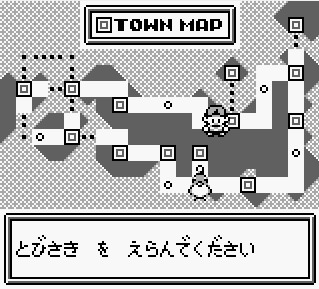
Route 15 - Collision Works Correctly Here
Drowzee, Hypno, Hoothoot, Pidgeotto, Vulpix, Lefmew (Beta Hoppip)
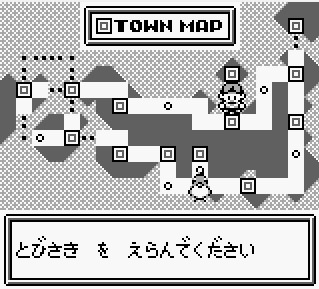
Tentacool, Tentacruel, Anchorage
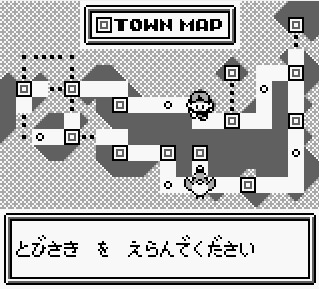
Vulpix, Sandslash, Trifox (baby Vulpix), Hoothoot, Lefmew, Snubbull

Is there grass here?? I can’t seem to find any.
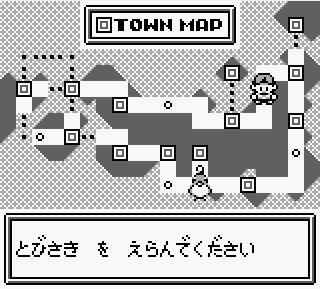
Route 18 - Collision works correctly here
Vulpix, Drowzee, Hypno, Wolfman, Ledyba, Pidgeotto
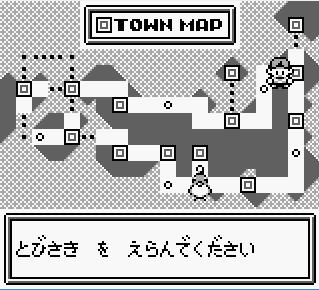
Mankey, Poliwag, Ledyba, Poliwhirl, Primeape
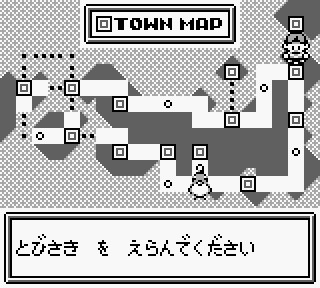
Tentacool, Tentacruel
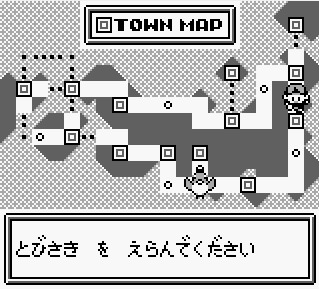
Mankey, Poliwag, Ledyba, Poliwhirl, Primeape
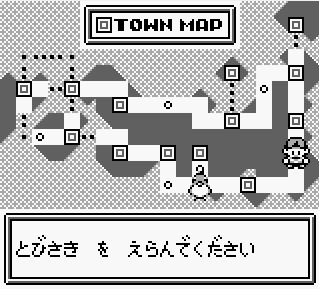
Skarmory, Rhydon, Marowak, Cubone

Raticate, Meowth, Gloom, Pikachu, Oddish, Arbok, Hoothoot, Smeargle, Ekans
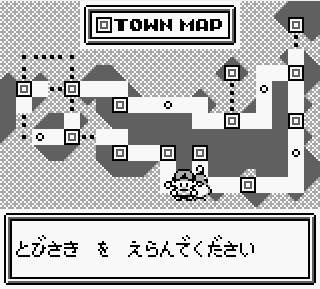
Demo Area 1 By Silent Hill - Collision works here (so do trainer battles)
Lefmew, Girafarig, Rattata, Pidgey
Demo Area 2 By Silent Hill (doesn’t seem to show up on the map)
Caterpie, Lefmew, Ledyba, Rattata, Metapod, Wolfman (very rare)
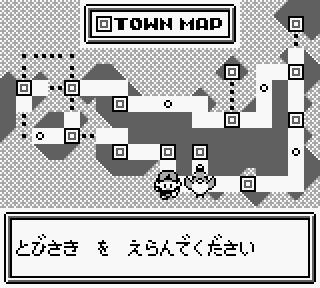
Demo Area 3 - Collision works here
Ekans, Lefmew, Pidgey, Rattata, Skarmory, Pikachu (rare)
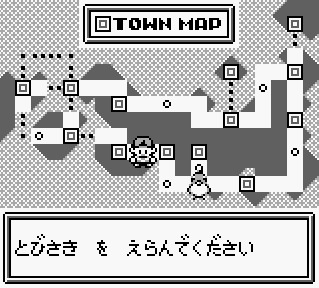
Hoothoot, Rattata, Oddish, Pidgey, Caterpie
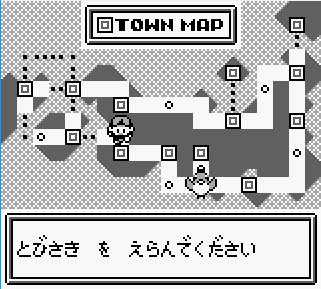
Drowzee, Duduo, Spearow, Ditto

Rattata, Drowzee, Spearow
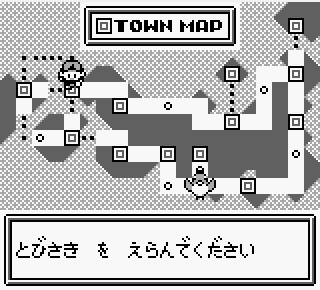
Tentacool, Tentacruel, Rayleep

Tentacool, Tentacruel, Rayleep

Tentacool, Tentacruel, Rayleep

Tentacool, Tentacruel, Rayleep

Tentacool, Tentacruel, Rayleep
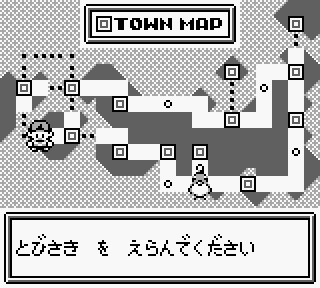
Geodude, Ekans, Spearow, Eggsecute (rare)
I think I covered everything? Not sure. I’ll do some double-checking a bit later. Give me a shout if you run into something on one of these routes I didn’t list!
This is a repost on a new blog. The original post was on Jun 1, 2018.
#pokemon#beta pokemon#gold beta#pokemon gold beta#pokemon gold spaceworld demo#mycontent#pokemon research/resources
7 notes
·
View notes